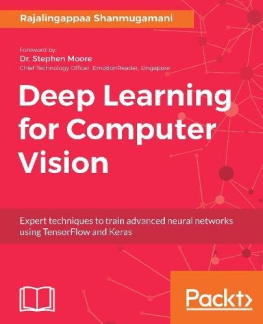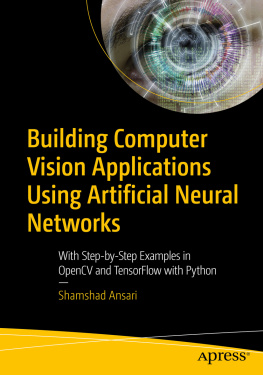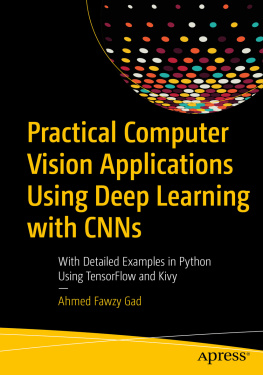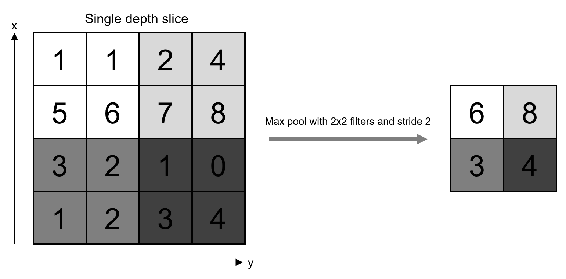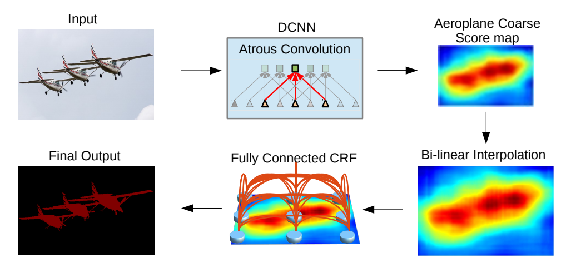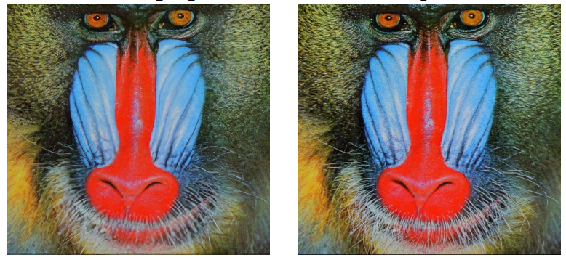Rajalingappaa Shanmugamani [Shanmugamani - Deep Learning for Computer Vision: Expert Techniques to Train Advanced Neural Networks Using TensorFlow and Keras
Here you can read online Rajalingappaa Shanmugamani [Shanmugamani - Deep Learning for Computer Vision: Expert Techniques to Train Advanced Neural Networks Using TensorFlow and Keras full text of the book (entire story) in english for free. Download pdf and epub, get meaning, cover and reviews about this ebook. year: 2018, publisher: Packt Publishing - ebooks Account, genre: Children. Description of the work, (preface) as well as reviews are available. Best literature library LitArk.com created for fans of good reading and offers a wide selection of genres:
Romance novel
Science fiction
Adventure
Detective
Science
History
Home and family
Prose
Art
Politics
Computer
Non-fiction
Religion
Business
Children
Humor
Choose a favorite category and find really read worthwhile books. Enjoy immersion in the world of imagination, feel the emotions of the characters or learn something new for yourself, make an fascinating discovery.
- Book:Deep Learning for Computer Vision: Expert Techniques to Train Advanced Neural Networks Using TensorFlow and Keras
- Author:
- Publisher:Packt Publishing - ebooks Account
- Genre:
- Year:2018
- Rating:4 / 5
- Favourites:Add to favourites
- Your mark:
Deep Learning for Computer Vision: Expert Techniques to Train Advanced Neural Networks Using TensorFlow and Keras: summary, description and annotation
We offer to read an annotation, description, summary or preface (depends on what the author of the book "Deep Learning for Computer Vision: Expert Techniques to Train Advanced Neural Networks Using TensorFlow and Keras" wrote himself). If you haven't found the necessary information about the book — write in the comments, we will try to find it.
Learn how to model and train advanced neural networks to implement a variety of Computer Vision tasks
Key Features- Train different kinds of deep learning model from scratch to solve specific problems in Computer Vision
- Combine the power of Python, Keras, and TensorFlow to build deep learning models for object detection, image classification, similarity learning, image captioning, and more
- Includes tips on optimizing and improving the performance of your models under various constraints
Deep learning has shown its power in several application areas of Artificial Intelligence, especially in Computer Vision. Computer Vision is the science of understanding and manipulating images, and finds enormous applications in the areas of robotics, automation, and so on. This book will also show you, with practical examples, how to develop Computer Vision applications by leveraging the power of deep learning.
In this book, you will learn different techniques related to object classification, object detection, image segmentation, captioning, image generation, face analysis, and more. You will also explore their applications using popular Python libraries such as TensorFlow and Keras. This book will help you master state-of-the-art, deep learning algorithms and their implementation.
What you will learn- Set up an environment for deep learning with Python, TensorFlow, and Keras
- Define and train a model for image and video classification
- Use features from a pre-trained Convolutional Neural Network model for image retrieval
- Understand and implement object detection using the real-world Pedestrian Detection scenario
- Learn about various problems in image captioning and how to overcome them by training images and text together
- Implement similarity matching and train a model for face recognition
- Understand the concept of generative models and use them for image generation
- Deploy your deep learning models and optimize them for high performance
This book is targeted at data scientists and Computer Vision practitioners who wish to apply the concepts of Deep Learning to overcome any problem related to Computer Vision. A basic knowledge of programming in Python-and some understanding of machine learning concepts-is required to get the best out of this book.
Table of Contents- Introduction to Deep Learning
- Image Classification
- Image Retrieval
- Object Detection
- Semantic Segmentation
- Similarity Learning
- Generative Models
- Image Captioning
- Video Classification
- Deployment
**
Rajalingappaa Shanmugamani [Shanmugamani: author's other books
Who wrote Deep Learning for Computer Vision: Expert Techniques to Train Advanced Neural Networks Using TensorFlow and Keras? Find out the surname, the name of the author of the book and a list of all author's works by series.

